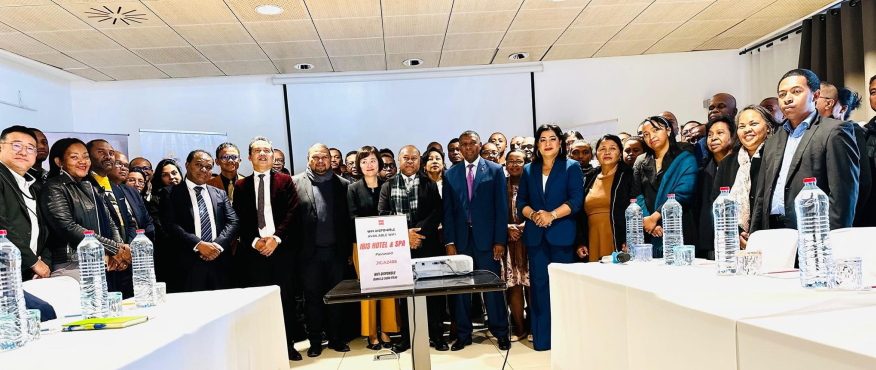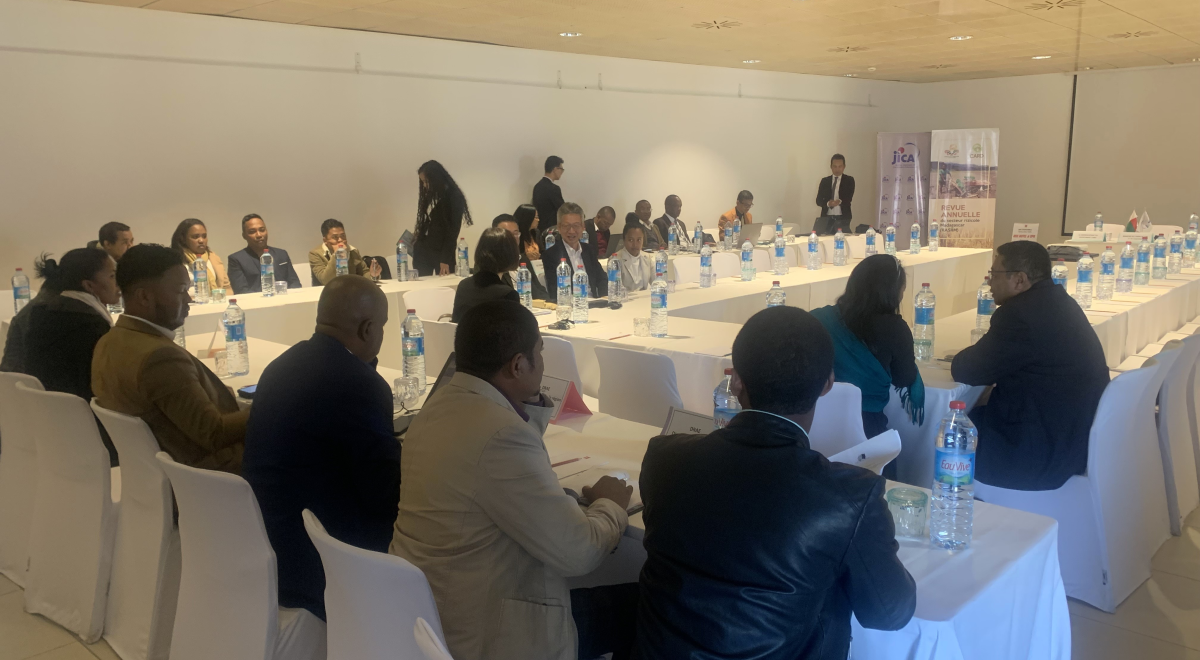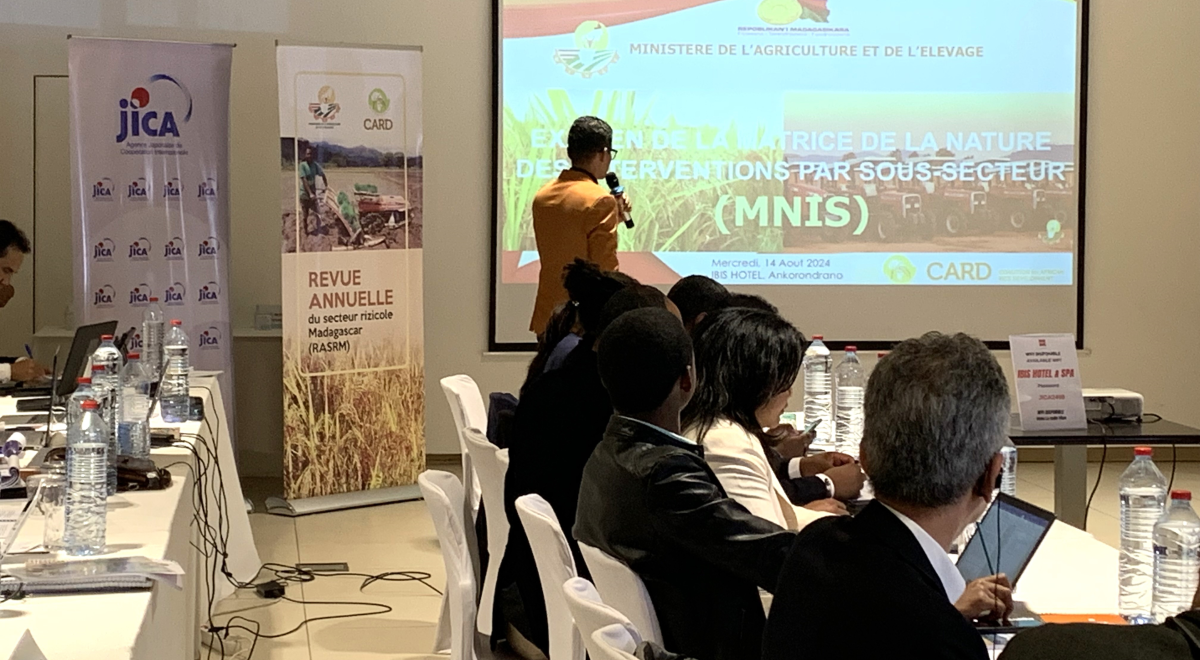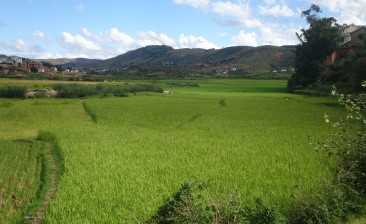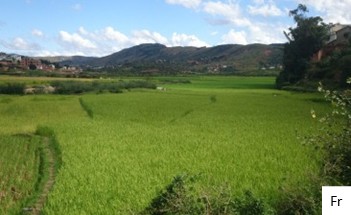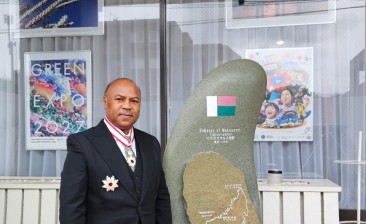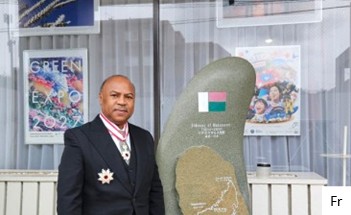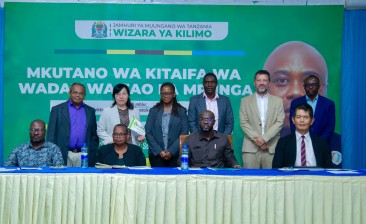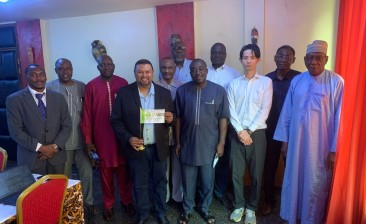Madagascar, August 2024
Annual Rice Sector Review Meeting:
Monitoring Madagascar’s Rice Development Strategy: Progress, Challenges, and the Road Ahead
The first Annual Rice Sector Review Meeting (ARSRM) held on August 14th, 2024, in Antananarivo, Madagascar, was a pivotal moment in the country’s efforts to strengthen its National Rice Development Strategy (NRDS 3). This gathering, organized by the Ministry of Agriculture and Livestock (MINAE) with support from the Coalition for African Rice Development (CARD), brought together a diverse group of stakeholders, including government officials, development partners, and private sector representatives. The meeting served as a critical platform for assessing the progress made under NRDS 3, identifying challenges, and charting a path forward for Madagascar’s rice sector.
A Crucial Gathering Amid Persistent Challenges
The ARSRM’s timing was significant, as Madagascar continues to grapple with a persistent rice production deficit. Despite incremental increases in output, the country remains far from achieving its 2024 production targets. This shortfall not only threatens food security but also highlights the underlying structural issues within the rice value chain.
Minister of Agriculture RATOHIARIJAONA R. Suzelin’s opening remarks underscored these challenges. He called for the development of actionable and realistic solutions, stressing that the success of NRDS 3 depends on the commitment and active participation of all stakeholders. This call to action was a recurring theme throughout the meeting, emphasizing the need for a coordinated and strategic approach to overcome the obstacles facing the rice sector.
The Significance of Stakeholder Engagement
One of the key takeaways from the meeting was the importance of inclusive participation. The workshop saw a diverse mix of attendees: producers, development partners, projects, researchers, government officers; all stakeholders involved in the rice value chain were represented, which is crucial for the successful implementation of NRDS 3. The recommendation was made to share the workshop’s outcomes in follow-up meetings of the donor platform to continue advocacy, avoid redundancies, and maximize impact.
- Development Partners: AfDB, AFD, AfricaRice, EU and JICA
- Projects: PICAS (AfDB), PROGRES (IFAD), PAPRIZ (JICA), FSRP, Riz Plus, CASEF (WB)
Laying the Groundwork for Future Initiatives
The presentations during the ARSRM were instrumental in laying the foundation for future initiatives under NRDS 3. These sessions provided a comprehensive overview of the strategy’s objectives, progress indicators, and key concept notes for upcoming projects. The focus on detailed data collection and analysis is particularly noteworthy, as it underscores the importance of evidence-based decision-making in driving the strategy forward.
However, the presentations also revealed gaps in the current approach, particularly in terms of data accuracy and the integration of private sector activities. Addressing these gaps will be crucial for ensuring that the strategy is not only well-designed but also effectively implemented.
Donor Insights and Strategic Coordination
The insights provided by donors at the workshop were both encouraging and instructive. Their recognition of the ARSRM as a first-of-its-kind initiative in Madagascar was a significant endorsement of MINAE’s efforts. However, their call for better coordination and information-sharing underscores a broader issue in development work: the need for coherent and aligned actions among all stakeholders.
Donors recommended that the outcomes of the ARSRM should be presented at upcoming strategic donor meetings to ensure that all parties are on the same page. This emphasis on transparency and coordination is critical, as fragmented efforts can lead to inefficiencies and missed opportunities in the development process.
The Path Forward: Addressing Challenges and Enhancing Impact
As the ARSRM concluded, participants agreed on several key actions to advance NRDS 3. These included continuing data collection, engaging donors more effectively, and enhancing stakeholder participation. However, the meeting also highlighted several challenges that need to be addressed to ensure the strategy’s success.
Key among these challenges is the need for stronger advocacy and communication efforts to secure the participation of all relevant stakeholders. Additionally, there is a pressing need to improve the accuracy and comprehensiveness of data collection, particularly by engaging regional directorates and integrating private sector contributions.
Challenges and Progress in Madagascar’s Rice Production: Key Insights and Future Strategies
The increase in production is primarily due to the expansion of cultivated land, which grew from 1,600,602 hectares in 2019 to 1,895,486 hectares in 2023. However, yield improvements were modest, rising from 2.6 to 2.7 tons per hectare over the same period. Irrigated rice dominates national production, accounting for 89% of the cultivated area and 83% of total output. Despite cyclone damage in 2023 reducing the harvested area, yield increased from 2.5 to 2.7 tons per hectare, leading to a production rise from 4,873,947 to 5,117,636 tons.
The production target for SNDR 2 was not met, achieving 4,232,042 tons against the goal of 7,747,904 tons in 2020. Between 2022 and 2023, there was a slight decrease in key indicators, including harvested area, locally produced resilient seed quantities, and small producers’ access to financial services. However, there were increases in rice production, self-sufficiency rates, yield, and small producers’ access to technical training and extension services. Despite a rise in self-sufficiency from 78.84% in 2022 to 87.3% in 2023, Madagascar remains dependent on imports to meet domestic demand. To boost rice production, it’s essential to expand irrigated and rainfed rice areas, and strengthen intensification, extension, and mechanization initiatives. Collaboration among all stakeholders is crucial to achieving SNDR III (2022-2030) goals.
Conclusion
The ARSRM set a positive tone for the future, but it also served as a reminder that achieving Madagascar’s rice development goals will require sustained effort and collaboration. By addressing the identified challenges and building on the progress made, Madagascar can move closer to achieving a more robust and sustainable rice sector, ultimately contributing to the country’s broader food security and economic development objectives.
